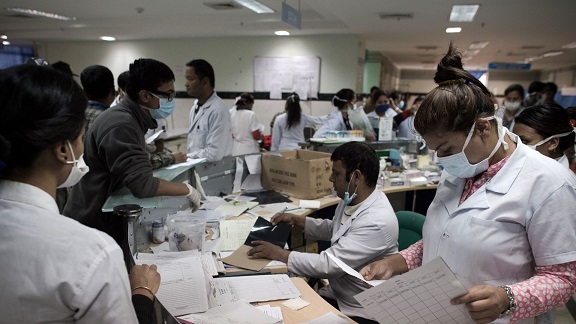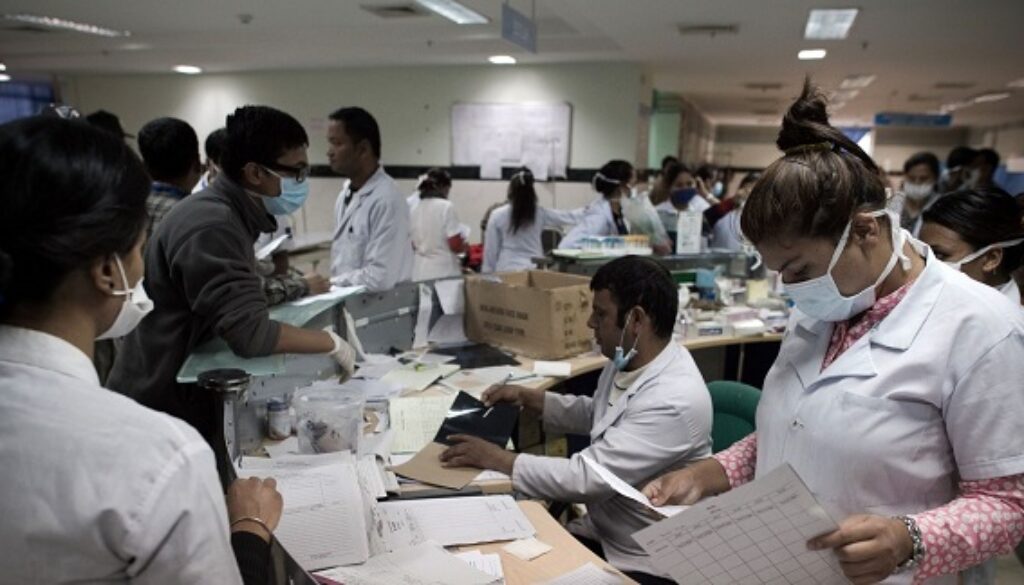Be Patient With Healthcare
As I sank into the plush, comfortable couch I surveyed the scene with a sense of unrealism. Potted plants, huge plasma screen televisions playing the latest movie, the aroma of coffee and fresh-baked bread, a choice of newspapers within hands reach, muted conversations. I was waiting for an appointment at the swank Kokilaben Ambani Hospital in suburban Mumbai.
I closed my eyes and reflected back to my days with another leading hospital in town – the hustle and bustle, sharing elevators with patients on stretchers holding aloft their own IV bottles, the clatter of people always running, lost in the labyrinthine corridors and above it all, the ever-present overpowering antiseptic smell.
How things have changed. India is being globally recognized as a destination of choice for quality health care at affordable rates. The emergence of private players like Fortis Health Care, Apollo Hospitals and big-time corporates like the Ambanis and Birlas in healthcare has changed the picture of healthcare – at least for those who can afford the private hospitals.
The Government is stepping up its act too. It is working to bring in quality, accountability, and uniformity of standards through the NABH. While it is still to attract smaller private players into its fold, a number of the bigger hospitals in India are accredited and there is a long waiting list of those in the process of doing so.
The neatly labeled markings on the floor led me to the doctor I needed to see. I floated along in a dream. “He is in the OT. Please wait.” I was told. So I waited. And waited. And waited. A few minutes turned into an hour, then two hours, three, and finally, I was told the doctor had arrived. By then there were so many patients waiting that each got what we did I am sure – a cursory examination, a standard list of diagnostics to get done, and it was NEXT…
No, I did not take my business to another doctor – because this hospital was the closest for the patient. This time. But with another hospital planned in the same area,
- Will I be back soon?
- Will I recommend this hospital?
- Do the physically comfortable surroundings make up for the indifferent treatment by the doctor and his staff?
- The parameters on which audits are done are most often limited to medical care & safety, related patient care procedures and efficient administration. Are the patient’s expectations from the health-care giver limited to `outcome’ success?
- Can health-care providers afford to be blind to the `process’ of treatment and the effect of the entire experience on the speed and level of recovery of the patient?
Some, very few, hospitals go beyond Emergency service procedures, infection control processes, mortality rates RCA and other medical & administrative aspects of treatment in their NABH or internal audits and look at the interactions between medical and administrative areas to ensure process optimization. All useful and important.
But do ALL of these contribute equally to patient experience perception? Which ones should be prioritized?
The totality of the customer experience, in this case, that of the patient and his caregiver, becomes even more important to other actors in the health care system – the diagnostic labs, the eye care centers, dental treatment clinics, wellness centers – where `technical quality’ of the treatment/procedure has been reduced to table stakes and can no longer be the differentiator.
Here understanding what the customer journey is and which parts affect them the most becomes important for maximizing the value from the money and efforts aimed at improving one’s competitive edge.
The complete sensory experience, the value-added services you provide – be it a report e-mailed or a reminder for a regular test or a home-visit – play a role in the decision making. Looking at the patient experience holistically and building differentiation based on the patient profile is the key to repeat business!
As a health care player looking at
- What is the customers level of risk perception for the type of service you provide & how is it impacting the decision to patronize you or not
- What is her ENTIRE engagement with you and what are her expectations from various the interactions – from admission procedure to pharmacy to nursing to bill settlement and discharge
- Which processes and touch-points have the greatest impact on overall experience perception & are key to satisfaction
- Where will it be most useful to focus on improvements / innovations that will delight her
- How to use this customer delight to improve financial performance
- are key first steps to framing a cost-effective customer experience strategy
Footnote:
The icing on the cake in my hospital visit? I was incorrectly charged an additional Rs 500/-. The counter staff did not know how to reverse the transaction made on the credit card. Neither could he refund it in cash since he did not know if he was authorized to do so! It would hopefully get adjusted in my next visit. Ah… Now that’s a novel way to be assured of repeat business!!!!
RELATED POSTS







